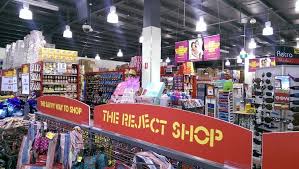
Update on The Reject Shop
The Reject Shop Limited (ASX: TRS) reported on Wednesday morning and we fortunate to be able to share some time with the company at our offices.While Montgomery currently is not a shareholder of TRS, we were greatly encouraged to see the steps being taken to improve profitability and revenue.
A short summary of our findings follow:
- Gross margins down from 44.6% to 44% in FY14 as a result of discounting of furniture & homewares in the first half of the year. Warm weather depressed winter ranges in the second half. Like for like sales down 0.1% in the first half, 1.2% in the second half.
- Overall, lower foot traffic in shopping malls & other popular areas has come at a bad time given an expanded store network to 326 stores.
- Stores which were historically above average in terms of profitability have become less so.
- Firm believes that they can increase share of wallet from their current customer base.
- Brand awareness campaign to increase foot traffic and repeat visits.
- Underperforming categories to be phased out.
- In addition, they expect that more intelligent inventory distribution strategies will reduce future risks of mark downs. For example, demographics & environment create more demand for specific items in some areas and less demand in others. These variables can be monitored and will be.
- EBITDA margins are lower due to a myriad of one-off and impairment charges related to underperforming stores. TRS incurred a larger than usual $4.8M charge in store opening costs.
- For those of you interested in our Internet-of-everything thesis, we expect TRS marketing expenses in FY15 to be similar to that of FY14 however with the mix is expected to to be more devoted to social media & digital advertising.
So what do we make out of all of this? TRS may be experiencing an erosion of their competitive advantage at present but management – to their credit – are responding quickly to shore up the level of brand awareness the company already enjoys, and leverage it to drive increased visitations and basket size.
This post was contributed by a representative of Montgomery Investment Management Pty Limited (AFSL No. 354564). The principal purpose of this post is to provide factual information and not provide financial product advice. Additionally, the information provided is not intended to provide any recommendation or opinion about any financial product. Any commentary and statements of opinion however may contain general advice only that is prepared without taking into account your personal objectives, financial circumstances or needs. Because of this, before acting on any of the information provided, you should always consider its appropriateness in light of your personal objectives, financial circumstances and needs and should consider seeking independent advice from a financial advisor if necessary before making any decisions. This post specifically excludes personal advice.
INVEST WITH MONTGOMERY
Not sure that ‘Brand’ is (or could be) the biggest driver here. The Reject shop by definition sells product that is either produced as a commodity, surplus to manufacturers requirements or close to expiry. Their biggest advantage is that they are cheap, and that most customers spend only a relatively small amount in store (if it was a large amount of money it is potentially cheaper bought online). The bottom line here is cash-flow and same store sales over prior year – both in decline.
Once bitten, twice shy. Might be a little while before I dip my toe in that pond again. Would like to see a general improvement in the retail sector first also.
Indeed. So would we. While we don’t currently own the stock, we note that if we wait to here the sparrows chirping, summer is already over.
Hi Scott,
Was there any insight from management as to why historically above average profitable stores are less so now? Or is this comment just a symptom of their poor merchandising mix which they seek to tweak in the future (back possibly to how it was).
Thanks for your question Jeffrey. It’s a combination of lower foot traffic, more competition, wallet size and consumer tastes.